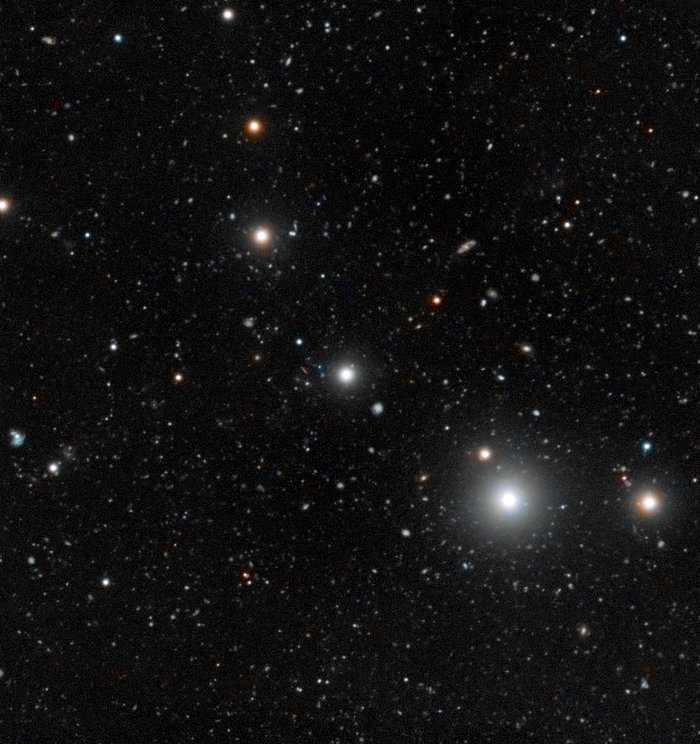Dark galaxies spotted for the first time
This deep image shows the region of the sky around the quasar HE0109-3518. The quasar is near the centre of the image. The energetic radiation of the quasar makes dark galaxies glow, helping astronomers to understand the obscure early stages of galaxy formation. Dark galaxies are essentially devoid of stars, therefore they don’t emit any light that telescopes can catch. This makes them virtually impossible to observe unless they are illuminated by an external light source like a background quasar.
This image combines observations from the Very Large Telescope, tuned to detect the fluorescent emissions produced by the quasar illuminating the dark galaxies, with colour data from the Digitized Sky Survey 2.
Δικαιώματα:ESO, Digitized Sky Survey 2 and S. Cantalupo (UCSC)
Σχετικά με την εικόνα
| Ταυτότητα: | eso1228a |
| Τύπος: | Παρατήρηση |
| Ημερομηνία δημοσίευσης: | 11/07/2012 μεσημέρι |
| Σχετικά δελτία τύπου: | eso1228 |
| Μέγεθος: | 1600 x 1700 px |
Σχετικά με το αντικείμενο
| Όνομα: | HE 0109-3518 |
| Τύπος: | Early Universe : Galaxy Early Universe : Galaxy : Activity : AGN : Quasar |
| Απόσταση: | z=2.4 (μετατόπιση στο ερυθρό) |
| Constellation: | Sculptor |
| Κατηγορία: | Quasars and Black Holes |
Είδη εικόνων
Εικόνα υποβάθρου (wallpaper)
Συντεταγμένες
| Position (RA): | 1 11 43.68 |
| Position (Dec): | -35° 3' 0.94" |
| Field of view: | 6.70 x 7.12 arcminutes |
| Προσανατολισμός: | Ο Βορράς είναι 0.1° αριστερά της κατακορύφου |
Χρώματα & Φίλτρα
| Ζώνη | Μήκος κύματος | Τηλεσκόπιο |
|---|---|---|
| Ορατό B | Digitized Sky Survey 2 N/A | |
| Ορατό R | Digitized Sky Survey 2 N/A | |
| Υπέρυθρο I | Digitized Sky Survey 2 N/A | |
| Ορατό B | 414 nm | Very Large Telescope FORS2 |

